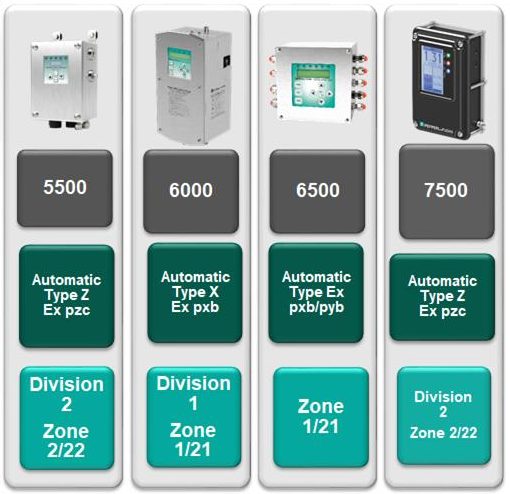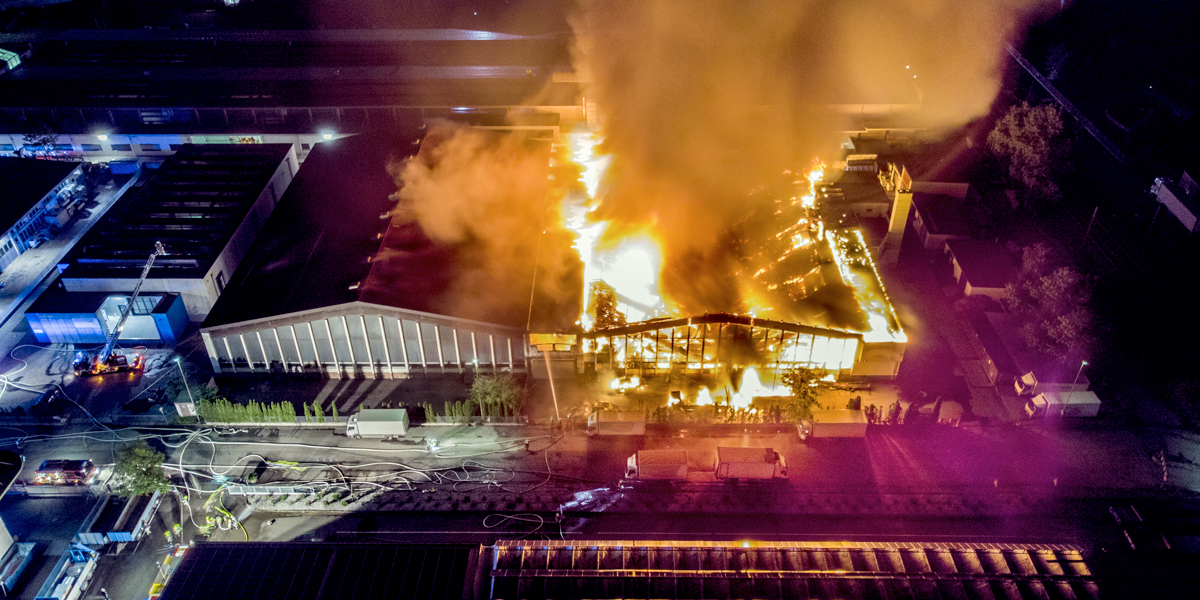Como evitar explosões de pó usando pressurização
Conteúdo deste artigo
Como evitar explosões de pó usando pressurização
Desastres envolvendo explosões de pó, como o da refinaria da Imperial Sugar Company, na Geórgia, EUA, resultaram em várias audiências do Congresso nos EUA que intimaram a Administração de Saúde e Segurança Ocupacional dos EUA (OSHA) por não aplicar os regulamentos de proteção dos trabalhadores. Como resultado, a OSHA já identificou, pelo menos 30.000 instalações nos EUA com problemas potenciais de riscos de pó. Estima-se também que cerca de 2.200 explosões de pó ocorram em toda a Europa a cada ano. À medida que o setor se conscientiza desse problema potencialmente devastador, ele precisará de soluções que protejam seus trabalhadores, instalações e os ambientes adjacentes. Leia em nosso artigo do blog onde atmosferas de pó combustível podem ocorrer e como elas podem ser evitadas.
Atmosferas de pó combustível subestimadas
Em fevereiro de 2008, uma explosão na refinaria Imperial Sugar Company , em Port Wentworth, Geórgia, EUA, resultou em 13 mortos e 42 feridos e destruiu a maior parte da instalação. Embora a investigação sobre a explosão tenha mostrado que houve apenas uma pequena explosão dentro da instalação, foi determinado que o choque e o pequeno incêndio que se sucederam à explosão suspenderam a poeira de açúcar no ar. Em seguida, a poeira pegou fogo e se espalhou por toda a fábrica.
Cinco anos antes, na Carolina do Norte, EUA, uma fábrica que produzia rolhas de borracha e revestimentos plásticos de comprimidos para a indústria farmacêutica sofreu uma catástrofe semelhante. A poeira de plástico criada a partir da fabricação do revestimento de comprimidos foi coletada nas máquinas e vigas da instalação. Durante o trabalho de rotina, as máquinas liberaram a poeira no ar, onde pegou fogo e explodiu. O plástico que incendiou não foi listado como material explosivo porque apenas o revestimento dos comprimidos como um todo tinham sido avaliados. Mas uma vez que o revestimento dos comprimidos foi moído e se transformou em um pó fino, tornou-se explosivo.
Como evitar explosões dentro e fora dos compartimentos
Um dos melhores métodos para prevenir explosões relacionadas à poeira é limpar completamente a poeira combustível dos ambientes de trabalho para garantir a segurança da instalação e do trabalhador. No entanto, os equipamentos que operam dentro dos alojamentos da instalação também devem ser protegidos. Isso começa impedindo a entrada de poeira combustível nos compartimentos durante a operação, o que pode ser obtido usando pressurização.
A pressurização utiliza ar comprimido ou gás inerte para proteger o equipamento dentro de um compartimento. O sistema de controle de pressurização vai regular e monitorar uma pressão positiva dentro do compartimento para evitar que a poeira entre no local. Ao separar a fonte de ignição da atmosfera de poeira combustível, o risco pode ser minimizado.
Como aplicar o método de pressurização
A primeira coisa a ser considerada ao planejar a aplicação do método de pressurização é que os requisitos para atmosferas de poeira potencialmente explosivas são diferentes daqueles para atmosferas de gás potencialmente explosivas:
- A purga não é necessária para áreas de poeira e deve ser evitada. Qualquer acumulação de poeira no interior do compartimento não pode sair adequadamente do local através do respiradouro com base em correntes que agitam o ar, como ocorre com gás ou vapor, devido a vários fatores, incluindo um respiradouro que pode ter um escape captador de faíscas. O usuário final precisará aplicar as medidas adequadas para limpar qualquer resquício de poeira do interior do compartimento, incluindo o equipamento no compartimento que está sendo protegido, fechá-lo e, em seguida, pressurizá-lo para evitar a entrada de pó antes de energizar o equipamento dentro do compartimento pressurizado.
- A pressão necessária para manter o pó fora é mais alta do que para gás, dependendo do padrão que está sendo seguido e do tamanho das partículas de poeira.
- O sistema de controle de pressurização usado deve ser certificado para aplicações com poeira. O sistema de controle de pressurização certificado apenas para gás não pode ser usado em um ambiente de poeira combustível.
Para obter informações adicionais sobre esse método de proteção, consulte a norma NFPA 496 para aplicações de Classe/Divisão. Para aplicações baseadas em zonas, consulte a norma IEC 60079-2 ou o desvio nacional adequado dessa norma. Consulte também as leis locais que regulam esse conceito de proteção e a instalação de equipamentos protegidos por pressurização.
Sistemas de controle de pressurização da Pepperl+Fuchs
A Pepperl+Fuchs traz mais simplicidade para nosso chão de fábrica com uma linha completa de produtos de pressurização que atendem aos requisitos para proteção contra pós perigosos. A tecnologia em nossos sistemas não só fornece purga e pressurização,-ela também monitora continuamente as condições no compartimento, faz ajustes automáticos e fornece alarmes de saída para proteção confiável.
A tabela abaixo mostra os nossos mais recentes produtos de controle de pressurização projetados para uso em aplicações com gás ou poeira perigosos:

Todos os produtos são totalmente certificados para Classe/Divisões e Zonas. Por exemplo, o sistema de compartimentos pressurizados da série 6000 pode ser usado em ambientes de gás explosivo (Classe I, Div 1 ou Zona 1) ou ambientes de poeira explosiva (Classe II, Div 1 ou Zona 21) e possui certificações para EUA, Canadá, ATEX e IECEx, bem como várias outras certificações locais.
Quer elevar o nível da sua proteção contra riscos para evitar explosões de poeira? Entre em contato conosco para saber mais sobre nosso portfólio de compartimentos pressurizados.
Assine nossa newsletter e receba regularmente notícias e fatos interessantes do mundo da automação.
